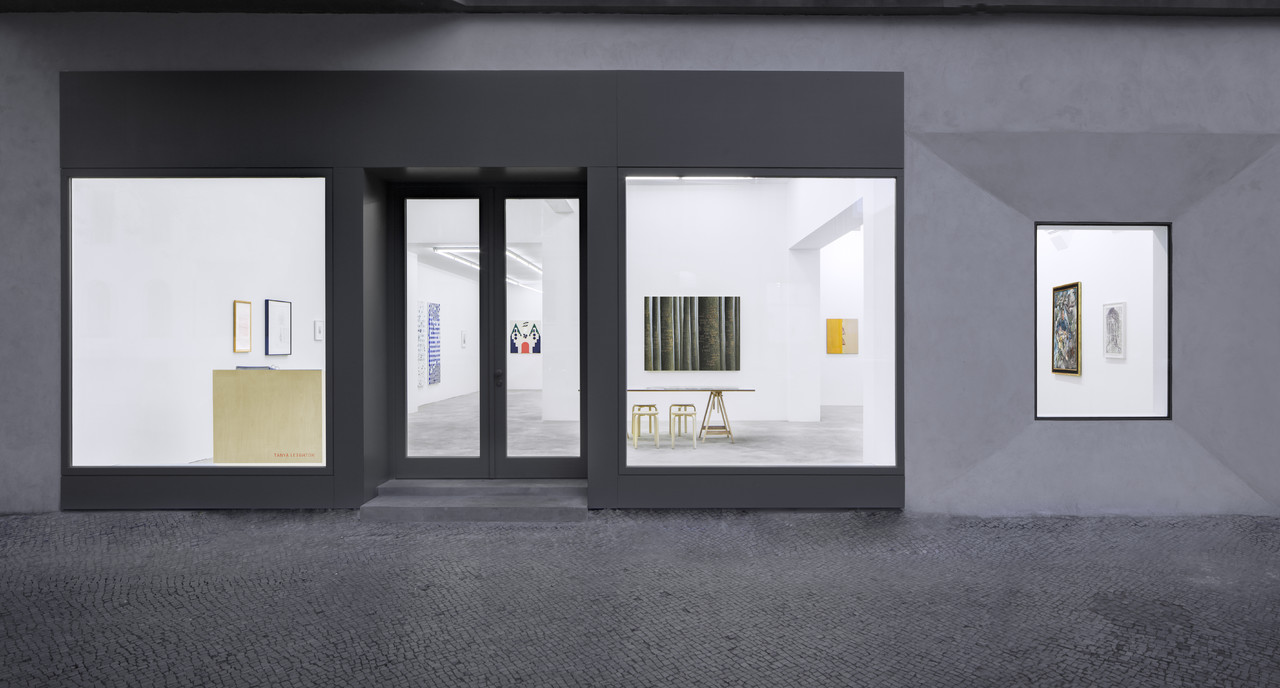Esteban Jefferson
Four Monuments
12 September – 1 November 2025, Kurfürstenstraße 24/25
Tanya Leighton is pleased to present ‘Four Monuments’, the third solo exhibition in Berlin by New York–based artist Esteban Jefferson.
Jefferson’s practice centres around questions of race, identity, and the legacies of colonialism in public monuments and urban space. Using painting, drawing, photography, and sound installation as forms of documentation, Jefferson depicts the focal points of his compositions in great detail, creating a stark contrast between the subject in focus and the surrounding environment. The paintings are left intentionally unfinished, creating a raw style emblematic of his investigative process. The scale of the works often references the tradition of history painting, where vast canvases enshrine nationalistic narratives and military triumphs. Jefferson inverts this tradition to memorialise and monumentalise the fugitive mark-making of the activist and protestor, whose disruption of the normal flow of the city is erased by the passing of time, yet – perhaps optimistically – can contribute to political change.
In Richmond, Virginia, July 7th, 2020, Jefferson turns to the removal of a statue of Confederate general J. E. B. Stewart. Taken down amidst the nationwide protests following the police murder of George Floyd, the work reflects both the catharsis and fragility of that moment: a reckoning with monuments long weaponised as symbols of white supremacy. These statues, often erected not directly after the Civil War but largely in the 20th century, functioned less as commemorations of “Southern Heritage” than as intimidation tactics towards Black Americans. The Stewart statue, installed in 1907, exemplifies this delayed assertion of power. As such monuments became flashpoints of protest and vandalism, their removals swept across the United States, marking a dramatic shift in public consciousness. Jefferson situates this work at the close of the first Trump presidency, when – amidst a global pandemic that freed up time for collective action – Americans took to the streets in a way he describes as unprecedented in his lifetime.
The series Baltimore, Maryland, June 12th, 2019 portrays another Confederate monument whose statue had already been removed, leaving only its base. On its surface, vandals had wheatpasted posters for an upcoming anti-racist rally, emblazoned with the slogan Stop the Hate. Equally striking were the torn edges of the flyers, evidence that others had attempted to rip them away – a gesture that, as Jefferson notes, amounted to a public stance in favour of hate. For the artist, this tension between inscription and erasure captures both the deeply divided nature of the United States and the growing racist and fascist movements within it. The remnants of the posters, at once contested and delicate, evoke absence and persistence: the struggle over who controls public narratives, and the traces left behind by collective resistance.
With Exarcheia, Jefferson shifts to Athens, capturing the anarchist neighbourhood’s public square where a classical putto sculpture has been transformed by countless layers of paint, posters, and stickers. The work reflects the district’s enduring culture of resistance and the refusal to allow state or authoritarian narratives to dominate civic space. Compared to the United States, the residents of Exarcheia seem far less willing to tolerate injustice or compromise with oppressive structures.
Finally, in Kurfürstenstrasse 161, Jefferson returns to Berlin, focusing on a building near the gallery itself. Similar to the work Exarcheia, he was drawn to the striking contrast between the building’s classical architecture and the raw leftist graffiti covering its base. Here, slogans such as “Free Palestine and Ukraine” and “ACAB” (All Cops Are Bastards) underline the coexistence of tradition and subversion, permanence and ephemerality. As in Athens, Jefferson highlights how layers of resistance inscribed onto the urban fabric disrupt the authority of official narratives, creating a dialogue between past and present, power and protest.
Taken together, the works in ‘Four Monuments’ form a dialogue across time and place. From Richmond to Athens to Berlin, Jefferson traces the ways monuments and their erasures reveal struggles over history, justice, and identity. The exhibition reflects on the limitations of protest movements while also holding space for a broader, global thread of resistance and hope.
